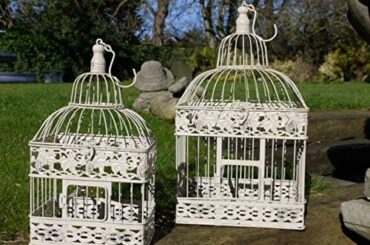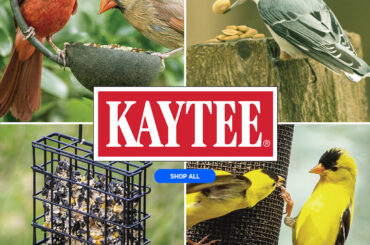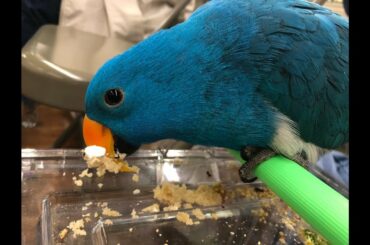Table of Contents
Introduction
Aviculture enthusiasts are captivated by the beauty and charm of pearl cockatiels. These captivating creatures have become significant figures in the world of aviculture, bringing joy to those who appreciate their unique qualities. In this article, we will delve into the fascinating world of pearl cockatiels, exploring their origins, genetics, physical characteristics, behavior and temperament, housing and environment, nutrition and feeding, breeding and reproduction, training and enrichment, health and common diseases, their role as pets, their importance in aviculture, notable success stories, ethical considerations and conservation efforts, and answers to frequently asked questions.
Origins and Genetics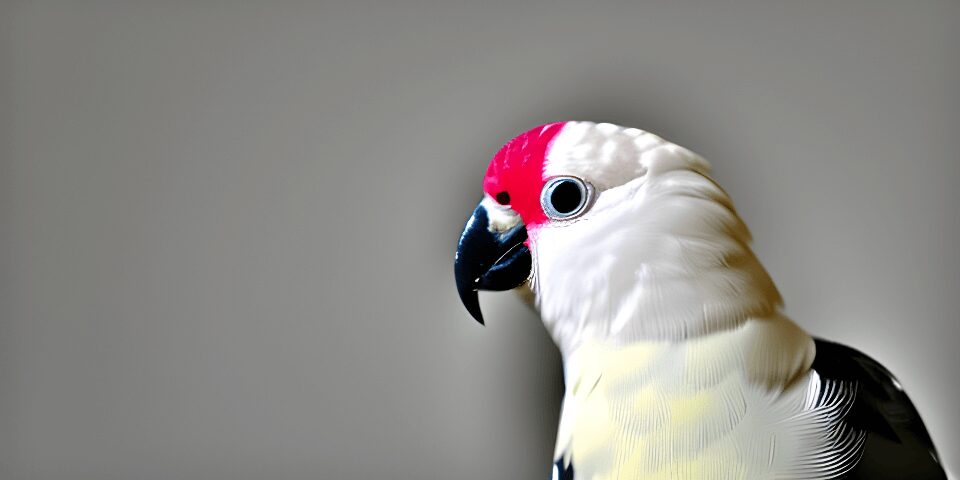
The natural habitat of pearl cockatiels
Originating from the arid regions of Australia, pearl cockatiels are native to the vast open spaces of their homeland. These social birds seek solace in the eucalyptus forests, savannahs, and grasslands that provide them with ample opportunities for foraging and nesting.
Inheritance patterns of the pearl mutation
Genetics play a fascinating role in the creation of these captivating creatures. The pearl mutation is inherited through a co-dominant pattern, meaning that when bred with a normal gray cockatiel, approximately half of the offspring will inherit the pearl mutation. This remarkable genetic phenomenon contributes to the enchanting diversity within the pearl cockatiel population.
Common color variations associated with pearls
Pearl cockatiels do not fail to mesmerize with their unique color variations. These ethereal beings can display a splendid array of hues, ranging from delicate pastels to vibrant shades. Some popular variations include cinnamon pearl, white-faced pearl, and lutino pearl, each showcasing a distinct combination of colors that adds to their allure.
Physical Characteristics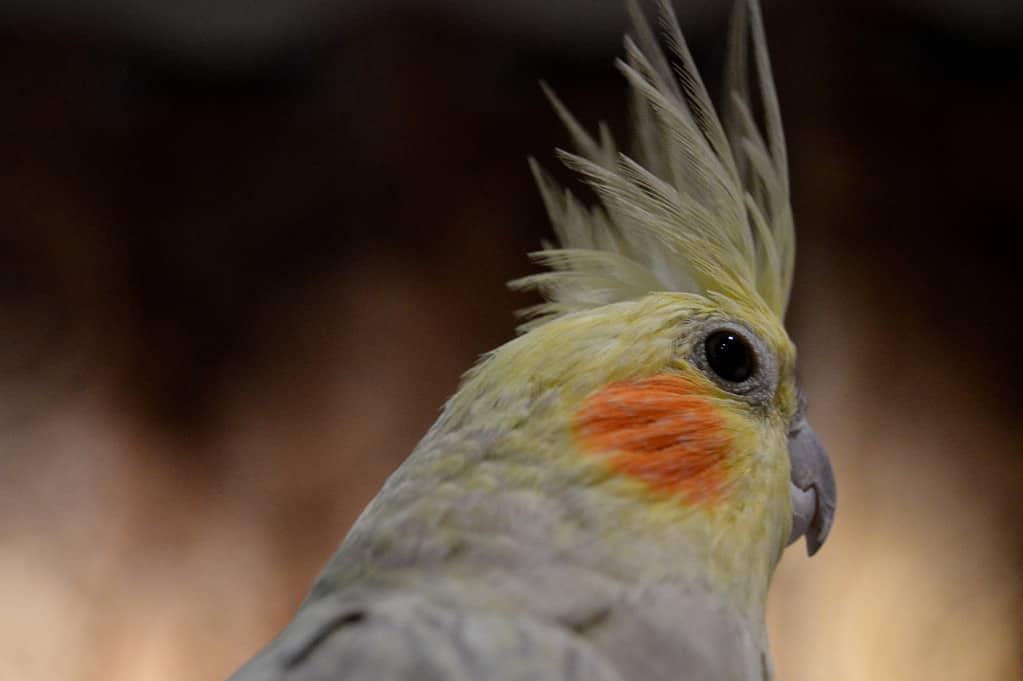
Distinctive markings and feather patterns
One cannot help but be entranced by the intricate markings and feather patterns adorning pearl cockatiels. Their plumage is adorned with mesmerizing pearl-shaped markings, scattered elegantly across their wings, back, and torso. This distinctive pattern distinguishes them from other cockatiel variants and makes them truly radiant in appearance.
Size and overall appearance of pearl cockatiels
Pearl cockatiels, like their counterparts, boast a moderate size, typically measuring around 12 to 14 inches from beak to tail. With their graceful crests and elegant tails, these avian gems epitomize beauty in motion. Their overall appearance exudes an aura of elegance and refinement that captures the hearts of aviculture enthusiasts worldwide.
Unique features that set them apart from other cockatiels
While all cockatiels possess their own individual charm, pearl cockatiels possess unique features that set them apart from the rest. Their pearl markings, coupled with their striking colors, create a visually captivating ensemble. Additionally, their gentle and inquisitive nature adds to their appeal, making them a delight to observe and interact with.
Behavior and Temperament
Personality traits commonly observed in pearl cockatiels
Pearl cockatiels are cherished for their amiable personalities and friendly dispositions. They are known to be affectionate companions, often seeking attention and forming strong bonds with their human counterparts. Their charming nature extends beyond their appearance, and they quickly become cherished members of any family fortunate enough to adopt them.
Social interactions with other birds and humans
These social butterflies thrive on interaction, both with other birds and their human companions. Whether engaging in playful chatter or sharing a tender moment, pearl cockatiels possess a knack for forging deep social connections. Their amiable demeanor and willingness to bond make them ideal companions for those seeking avian friendship.
Cognitive abilities and intelligence levels
Beyond their inherent beauty and sociability, pearl cockatiels possess remarkable cognitive abilities and intelligence. They are quick learners, readily grasping new concepts and even displaying problem-solving skills. Their curious nature fuels their intellectual growth, and they often enjoy engaging in stimulating activities that challenge their minds.
Housing and Environment
Optimal cage setup for pearl cockatiels
Creating a comfortable and secure living space is crucial for the well-being of pearl cockatiels. A spacious cage with horizontal bars provides them with ample room to spread their wings and move about freely. Including perches, toys, and a variety of stimulating accessories within the cage helps to provide them with mental and physical enrichment.
Environmental conditions for their well-being
Maintaining suitable environmental conditions is paramount for the health and happiness of pearl cockatiels. These feathered beauties thrive in moderate temperatures, ideally between 68 to 78 degrees Fahrenheit. Ensuring proper ventilation, exposure to natural light, and a tranquil atmosphere aids in their overall well-being.
Creating a stimulating and enriching habitat
Pearl cockatiels flourish when their living environment is enriched with various stimuli. Providing a diverse range of toys that encourage physical exercise and mental stimulation is essential. Additionally, offering opportunities for foraging, such as puzzle feeders or hiding treats, allows them to engage in their instinctual behaviors, adding to their overall quality of life.
Nutrition and Feeding
Understanding dietary requirements
Maintaining a well-balanced and nutritious diet is vital for the overall health of pearl cockatiels. Their diet primarily consists of a varied blend of fresh fruits, vegetables, seeds, and high-quality pellets. Including a calcium supplement ensures they receive the necessary nutrients to support their bone structure and maintain optimum health.
Recommended food sources for optimal health
To provide a balanced diet, include a selection of fruits and vegetables such as apples, oranges, spinach, and carrots. Offering a variety of seeds and pellets specifically formulated for cockatiels helps to ensure they receive essential vitamins and minerals. As with any dietary regimen, it is advisable to consult with an avian veterinarian for personalized recommendations.
Common nutritional deficiencies and health risks
It is crucial to be aware of potential nutritional deficiencies and health risks that pearl cockatiels may face. Common deficiencies include calcium, vitamin A, and iodine. These deficiencies can result in weakened bones, compromised immune systems, and poor feather quality. Regular veterinary check-ups and a well-rounded diet help prevent these issues and ensure their long-term well-being.
Breeding and Reproduction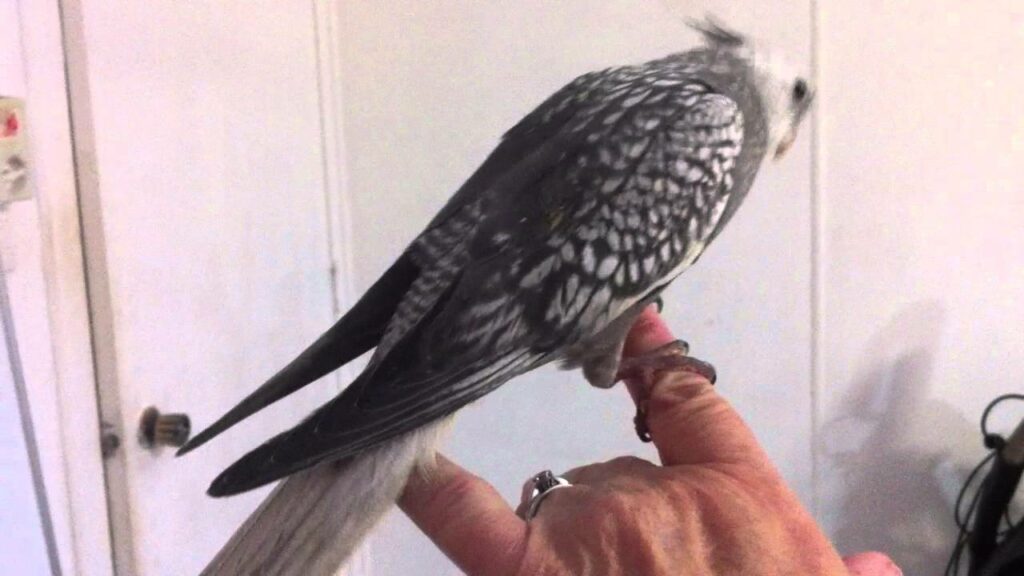
Understanding the breeding cycle of pearl cockatiels
Breeding and reproduction bring forth new generations of these radiant avian gems. Pearl cockatiels typically lay eggs in clutches of 4 to 6, with an incubation period lasting around 18 to 21 days. It is essential to provide a suitable nesting box and maintain a calm and stress-free environment to support successful breeding.
Tips for successful breeding and raising chicks
Careful considerations are necessary when breeding and raising pearl cockatiel chicks. Providing a nutrient-rich diet to the parents strengthens their ability to care for their young. Monitoring the eggs meticulously, ensuring proper temperature and humidity, and handling the chicks with care during their fragile early stages of life are all crucial factors that contribute to successful breeding.
Genetic considerations when breeding pearls
Breeders must remain mindful of the genetic considerations when breeding pearl cockatiels. Understanding and implementing proper breeding strategies help preserve the unique characteristics of this variant while avoiding potential health issues. Responsible breeding practices ensure the continuation of the pearl lineage while promoting the well-being of these magnificent creatures.
VIII. Training and Enrichment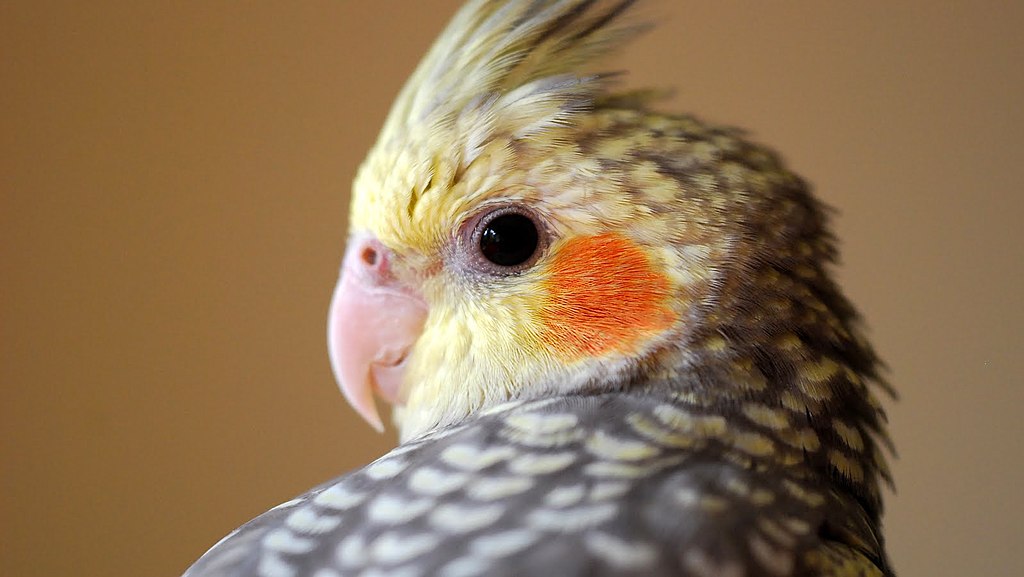
Basic training techniques for pearl cockatiels
Training pearl cockatiels can be an enriching experience for both the owner and the bird. With their inherent intelligence and sociable nature, they respond well to positive reinforcement training methods. Simple commands such as stepping up onto a hand or performing tricks like turning in circles can be taught with patience, consistency, and rewards.
Enrichment activities to stimulate their senses
Stimulating a pearl cockatiel’s senses is essential for maintaining their happiness and mental well-being. Engaging them with interactive toys, puzzles, and foraging opportunities keeps their curious minds engaged. Offering them time outside of their cage to explore their surroundings under supervised conditions provides them with additional mental and physical stimulation.
Developing a strong bond through positive reinforcement
Building a strong bond with a pearl cockatiel requires patience, perseverance, and positive reinforcement. Regular, gentle interaction, such as talking to them softly and offering treats, helps establish trust and strengthens the relationship. This mutual bond fosters a deep sense of companionship and creates a foundation for a lifetime of shared moments.
Health and Common Diseases
Recognizing signs of a healthy pearl cockatiel
The well-being of a pearl cockatiel is of utmost importance. Recognizing signs of good health ensures their longevity and quality of life. Clear and bright eyes, smooth feathers, a responsive and energetic demeanor, and regular preening habits are all positive indicators of a thriving bird. Monitoring their weight, droppings, and overall behavior aids in early detection of any potential health concerns.
Common illnesses and diseases to watch out for
Though pearl cockatiels are generally hardy birds, they can be susceptible to certain health issues. Respiratory infections, feather plucking, and fatty liver disease are among the common ailments they may encounter. Regular veterinary care, a balanced diet, and maintaining a clean and stress-free environment help mitigate the risk of these conditions and promote optimal health.
Veterinary care and preventive measures
Regular visits to an avian veterinarian are essential for maintaining the health of pearl cockatiels. These professionals can provide comprehensive check-ups, administer necessary vaccinations, and advise on preventive measures. Trimming their wings and nails, deworming, and implementing appropriate parasite control measures are among the steps taken to ensure their well-being.
Pearl Cockatiels as Pets
Factors to consider before getting a pearl cockatiel
Before adding a pearl cockatiel to your family, considering certain factors is crucial. These delightful companions thrive on social interaction and require daily mental and physical stimulation. They can live for up to 20 years, so a long-term commitment to their care and well-being is necessary. Preparing a suitable environment and educating oneself about their needs is essential for responsible ownership.
Bonding and building trust with your pet
Building a bond and establishing trust with a pearl cockatiel is a rewarding journey. Patience, consistent interaction, and respecting their comfort zones are key to a successful connection. Gradually introducing them to their new surroundings and offering gentle affection help to solidify the bond and create a loving relationship based on trust and mutual understanding.
Responsible ownership and long-term commitment
Responsible ownership of a pearl cockatiel entails providing for their physical, emotional, and mental needs. Ensuring proper nutrition, regular veterinary care, mental and physical enrichment, and a safe environment are fundamental to their well-being. With a lifespan of up to two decades, owning a pearl cockatiel requires a long-term commitment to their care and happiness.
Pearl Cockatiels in Aviculture
The popularity of breeding and exhibiting pearls
Pearl cockatiels have gained substantial popularity within the avicultural community. Their striking appearance and appealing demeanor make them sought-after companions for enthusiasts. Breeders and exhibitors take great pride in their ability to produce and showcase these radiant gems, turning them into stars in the world of aviculture.
Active communities and organizations for pearl enthusiasts
Pearl cockatiel enthusiasts have formed vibrant communities, fostering a sense of camaraderie and providing a platform for sharing their knowledge and experiences. Online forums, social media groups, and avian associations dedicated to these beloved birds offer a wealth of information and support to those passionate about pearl cockatiels.
Preserving and protecting the genetic diversity of pearls
Preserving the genetic diversity of pearl cockatiels is of utmost importance in ensuring their longevity within aviculture. Conservation efforts by responsible breeders and organizations are vital for safeguarding the gene pool and preventing potential inbreeding issues. Through careful breeding practices and transparent lineage documentation, the continued existence of these radiant stars is secured.
Case Studies: Pearl Cockatiel Success Stories
Breeder showcases and their exceptional pearls
Breeder showcases offer a glimpse into the exceptional pearls that have captivated the avicultural community. These displays demonstrate the stunning variety of color combinations and unique features that breeders have achieved. Whether it’s showcasing rare mutations or pushing the boundaries of genetic possibilities, these breeders inspire and awe enthusiasts with their remarkable achievements.
Training achievements and impressive capabilities
The remarkable talent and learning capabilities of pearl cockatiels are frequently showcased in training achievements. Their ability to mimic sounds, perform tricks, and engage in interactive play demonstrate their intelligence and the efforts of their dedicated owners. From acrobatic performances to charming duets, these achievements highlight the mutually enriching bond between pearl cockatiels and their human companions.
Inspirational stories from pearl cockatiel owners
Pearl cockatiel owners frequently share heartwarming and inspirational stories about their beloved pets. Tales of resilience, loyalty, and unconditional love highlight the profound impact these radiant birds have on their lives. These stories depict the deep connection and companionship that pearl cockatiels offer, transcending the boundaries between species and enriching the lives of those fortunate enough to share their journey.
READ ALSO:
- The Shocking Truth: Can Cockatiels eat Parakeet Food? Unveiling the Ultimate BFF’s Dietary Secrets!
- Feathered Foodies Unite: Why Kaytee Parakeet Food is the Must-Have Menu for Parakeet Lovers
- Meet the Enchanting Blue Eclectus Parrot: Nature’s Colorful Masterpiece
- The Ultimate Guide to Finding the Best Parakeet Food Near You
- Meet the Enchanting Blue Eclectus Parrot: Nature’s Colorful Masterpiece
XIII. Ethical Considerations and Conservation Efforts
Ensuring ethical breeding practices and responsible ownership
Ethical breeding practices and responsible ownership are cornerstones of the avicultural community. Ethical breeders prioritize the health, welfare, and genetic welfare of their birds, striving for excellence while avoiding detrimental practices. Responsible ownership involves providing suitable care, promoting conservation efforts, and ensuring the long-term well-being of pearl cockatiels as treasured companions.
Protecting wild populations and preserving natural habitats
Conservation efforts extend beyond the borders of aviculture to protect wild populations and their natural habitats. By supporting organizations dedicated to the preservation of native ecosystems, we can contribute to the well-being of pearl cockatiels in their homeland. Protecting their habitats and promoting sustainable practices are vital steps in securing a bright future for both captive and wild populations.
Conservation organizations dedicated to pearl cockatiels
Several organizations are actively involved in the conservation efforts concerning pearl cockatiels. Through research, habitat preservation, and educational initiatives, these organizations contribute to the long-term survival and well-being of these captivating birds. By supporting these organizations, aviculture enthusiasts can play a crucial role in preserving the natural heritage of pearl cockatiels for future generations.
Frequently Asked Questions
Can pearl cockatiels talk?
While cockatiels, including pearl cockatiels, are renowned for their ability to mimic sounds, their talent for speaking is more limited compared to some other parrot species. However, with patience, training, and consistent interaction, some individuals can learn to repeat simple words or phrases.
How long do pearl cockatiels live?
Pearl cockatiels, like their cockatiel counterparts, have a lifespan ranging from 15 to 20 years with proper care. Providing a healthy diet, regular veterinary check-ups, mental stimulation, and a loving environment contribute to their longevity.
Can male pearl cockatiels sing?
Male pearl cockatiels possess the same vocal abilities as their counterparts, and their singing is a cherished aspect of their charm. With melodious notes and a sweet disposition, their songs can bring delight and enchantment to any household lucky enough to have them as companions.
Summary
In this comprehensive article, we have explored the enchanting world of pearl cockatiels, uncovering their origins, genetic intricacies, physical characteristics, behavior and temperament, optimal housing and environmental conditions, dietary needs, responsible breeding practices, training techniques, health considerations, and their significance within aviculture and conservation efforts. The allure of these radiant stars in aviculture remains enduring, captivating the hearts of enthusiasts worldwide with their beauty, charm, and remarkable qualities.


